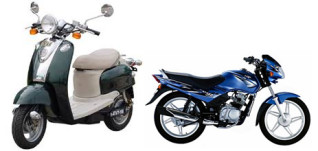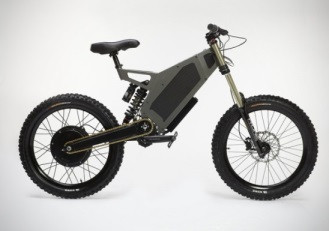Obtaining a motorcycle license in California is essential for safe and legal riding. The Department of Motor Vehicles (DMV) ensures that all riders demonstrate the necessary knowledge and skills through a series of tests. This guide will walk you through everything you need to know about the “Bike Test Dmv,” officially known as the motorcycle license test, in California, helping you understand the requirements, prepare effectively, and pass with confidence.
Understanding California Motorcycle License Classes
California offers specific motorcycle license classes depending on the type of two-wheeled vehicle you intend to operate. Understanding these classes is the first step in navigating the licensing process:
-
Class M1 License: This is the most comprehensive motorcycle license, allowing you to operate any two-wheel motorcycle, motor-driven cycle, or motorized scooter. It also covers all vehicles listed under Class M2. If you plan to ride a standard motorcycle, this is the license you need.
-
Class M2 License: This license is more restrictive and permits the operation of motorized bicycles, mopeds, or motorized scooters. It does not allow you to operate standard motorcycles or motor-driven cycles classified under M1.
It’s worth noting that holders of a Class C driver’s license (the standard car license) can operate certain types of motorcycles, specifically a motorcycle with a sidecar attached, a three-wheel motorcycle, or a motorized scooter. However, for most two-wheeled motorcycle riders, an M1 or M2 license is necessary.
Why the DMV Bike Test Matters
The DMV bike test is not just a formality; it’s a critical evaluation of your ability to operate a motorcycle safely in real-world traffic conditions. The DMV emphasizes testing because individuals often overestimate their riding skills. These tests are designed to be objective and ensure that all licensed riders possess a baseline level of competence.
To earn your motorcycle license, you’ll need to visit a DMV office that provides driver license services and apply for a Class M1 or M2 license. The process involves passing several tests:
- Driver Knowledge Test: This test assesses your understanding of general driving rules and regulations, based on the California Driver Handbook.
- Motorcycle Knowledge Test: This test focuses specifically on motorcycle-related laws, safe riding practices, and information detailed in the California Motorcycle Handbook.
- Motorcycle Skills Test: This practical test evaluates your ability to control a motorcycle through a series of maneuvers. Alternatively, you can waive this test by completing a California Motorcyclist Safety Program (CMSP) training course and obtaining a Certificate of Completion of Motorcycle Training (DL 389).
The knowledge tests are computer-based and consist of multiple-choice questions derived from the official handbooks. The motorcycle skills test is conducted either in a controlled off-street area or, in some cases, in an actual traffic environment. The DL 389 certificate is valid for 12 months from the date of issuance.
Delving into the Motorcycle Knowledge Test
The motorcycle knowledge test is a crucial component of the licensing process. It ensures that you have a solid understanding of the rules of the road and specific safety guidelines for motorcycle operation. The questions are drawn directly from both the California Driver Handbook and the California Motorcycle Handbook. Thoroughly studying these handbooks is the best way to prepare for this test.
Topics covered in the knowledge test include:
- California traffic laws relevant to motorcycles
- Safe riding techniques and strategies
- Motorcycle-specific road signs and signals
- Understanding motorcycle mechanics and maintenance basics
- Emergency procedures and hazard avoidance
It’s imperative to take this test seriously and avoid any form of cheating. The DMV strictly prohibits the use of testing aids, including handbooks, notes, or electronic devices. Using any unauthorized materials will result in immediate test failure, and may lead to further action against your driving privileges.
Mastering the Motorcycle Skills Test
The motorcycle skills test is the practical component of the bike test DMV, designed to assess your physical ability to control and maneuver a motorcycle. This test is a pass/fail evaluation of your basic vehicle control skills, ensuring you can handle a motorcycle in typical traffic situations.
Presenting a valid Certificate of Completion of Motorcycle Training (DL 389) from a CMSP course can waive the skills test requirement. However, even with a DL 389, you might be required to perform an observation test when applying for a motorcycle-only license.
The motorcycle skills test typically includes a pre-trip inspection and a series of riding exercises. It’s advisable to take the test on the type of motorcycle you plan to ride regularly, as the size and handling characteristics can vary.
Pre-Trip Inspection
Before you even start riding, you’ll be asked to locate and identify the following components on your motorcycle:
- Starter
- Kill switch
- Clutch (if equipped)
- Throttle
- Gear selector
- Headlight dimmer switch
- Brakes
- Turn signals
- Horn
Riding Skills Maneuvers
The riding portion of the test involves demonstrating proficiency in several key maneuvers within designated tracking paths:
-
Riding in Tracking Paths: This simply involves maintaining control within marked lines, demonstrating basic motorcycle balance and control.
-
Serpentine Ride: You’ll weave through a line of five cones, starting to the right of the first cone. This tests your ability to steer and control the motorcycle at lower speeds while changing direction.
-
Circle Ride: Following the serpentine ride, you’ll circle twice in a clockwise direction, maintaining the front wheel within the tracking path. You’ll then weave back through the cones to return to the starting point. This maneuver assesses your ability to maintain balance and control in a continuous turn.
-
Slow Ride: This tests your slow-speed balance and control. You’ll ride slowly between two parallel lines, keeping the front tire within the tracking path. After completing this, you’ll perform two counterclockwise circle rides.
-
Gear Shift Ride: (Only for motorcycles with clutch and gears). You’ll ride in a straight path, shift gears up and then down, perform a U-turn, return, shift gears again, and come to a smooth stop. This evaluates your gear shifting ability, clutch control, and smooth stopping.
-
Observation Test: (For motorcycle-only license applicants who have never held any other class of license). An examiner will observe you riding in a pre-determined route near the DMV, assessing your ability to handle the motorcycle in a real-world, albeit controlled, environment.
 Example of two smaller motorcycle in beige and blue.
Example of two smaller motorcycle in beige and blue.
Requirements for Obtaining Your M1 or M2 License
The specific requirements to obtain an M1 or M2 license vary slightly depending on your age. Here’s a breakdown:
| Requirement | Minors (15½ – 17) | Adults (18 – 20) | Adults (21+) |
|---|---|---|---|
| Driver Education & Training Certificates | ✓ | N/A | N/A |
| CMSP Certificate (DL 389) | ✓ | ✓ | N/A |
| Driver License Application (DL44 or DL44C) | ✓ | ✓ | ✓ |
| Parent/Guardian Signature (if minor) | ✓ | N/A | N/A |
| Vision Exam | ✓ | ✓ | ✓ |
| Fingerprints | ✓ | ✓ | ✓ |
| Pay Fees | ✓ | ✓ | ✓ |
| Photograph | ✓ | ✓ | ✓ |
| Pass Knowledge & Skills Tests | ✓ | ✓ | ✓ |
| Instruction Permit (at least 6 months) | ✓ | ✓ | N/A |
Important Notes:
- Minors (15½ – 17): Must complete driver education and training, obtain a DL 389, and pass both driver and motorcycle knowledge tests.
- Adults (18 – 20): Must obtain a DL 389 and pass both driver and motorcycle knowledge tests.
- Adults (21+): CMSP course is encouraged but not mandatory.
Instruction Permit Restrictions: If you opt for an instruction permit before your full license, it comes with restrictions: No passengers, no freeway riding, and no nighttime riding.
California Motorcyclist Safety Program (CMSP)
The CMSP is a highly recommended, and sometimes required, training program that significantly enhances your motorcycle riding skills and safety knowledge.
-
Mandatory for Under 21: Applicants under 21 years old must complete a CMSP course before they can even receive a motorcycle instruction permit.
-
Encouraged for 21 and Older: While not mandatory for those 21 and older, enrolling in a CMSP course is strongly encouraged. It provides valuable hands-on training for riders of all experience levels.
Completing a CMSP course and obtaining the DL 389 certificate allows you to waive the DMV motorcycle skills test. The DMV does not accept out-of-state motorcycle training programs for skills test waivers.
For more information about the CMSP and to find a course near you, contact CMSP at 1-877-RIDE-411 or visit www.motorcyclesafetyca.com. Remember, the DL 389 certificate is valid for 12 months from the issue date.
 small motorized dark green bicycle
small motorized dark green bicycle
Conclusion: Ace Your Bike Test DMV and Ride Safe
Successfully navigating the bike test DMV process is your gateway to legally and safely enjoying motorcycling in California. By understanding the license classes, preparing thoroughly for the knowledge and skills tests, and considering the highly beneficial CMSP training, you’ll be well-equipped to earn your motorcycle license. Remember to consult the official California Motorcycle Handbook and the DMV website for the most up-to-date information and resources. Ride safe and enjoy the journey!
